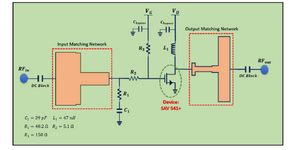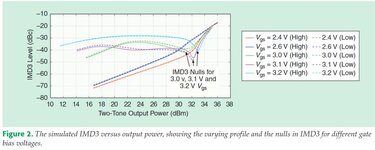arwen16
Junior Member level 3
Hello,
I have designed a broadband (0.8-3 GHz) medium power class AB power amplifier. While I was nothing down the output power for different values of input power (-20 to 20dB) for each frequency , I noticed that the current would drop from 78mA to 50mA when I increased the input power. For some frequencies, it would end up increasing from 78mA to 85mA.
I do not understand this phenomenon. Could someone explain what is happening here?
I have designed a broadband (0.8-3 GHz) medium power class AB power amplifier. While I was nothing down the output power for different values of input power (-20 to 20dB) for each frequency , I noticed that the current would drop from 78mA to 50mA when I increased the input power. For some frequencies, it would end up increasing from 78mA to 85mA.
I do not understand this phenomenon. Could someone explain what is happening here?

